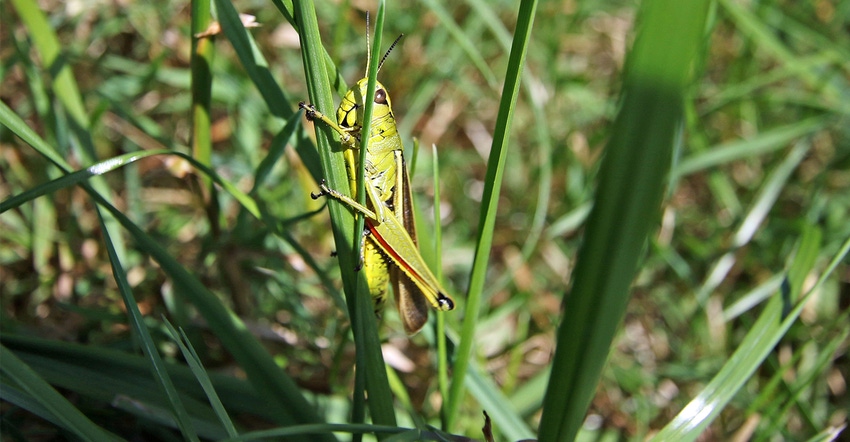July 14, 2017

Grasshoppers were a problem that affected thousands of acres of Kansas wheat and alfalfa every year back in the 1940s, and it was common practice to mix up poison bait and spread it onto vulnerable fields when farmers noticed the hungry insects moving in.
A common recipe for the poison bait was to mix 100 pounds of mill-run bran with 300 pounds of sawdust and add 16 pounds of sodium fluosilicate. Mix all three ingredients in a box, then add enough water to make a moist mixture, usually about 12 to 13 gallons.
The recommendation from USDA was to cover the field thinly, avoiding wasting bait by piling it up.
70 years ago
Conservation programs were popular with farmers back in 1947, and it was difficult for funding to keep up with demand. In August of that year, Congress gave the go-ahead for resuming payments to farmers enrolled in the AAA Conservation program after the program was suspended because of a lack of funding. After failing to provide the needed $300 million, Congress relented and authorized $265 million, which it said should be sufficient to keep the program operating.
60 years ago
A publication that was a sign of the times was advertised in the August edition of Kansas Farmer in 1957, when the Cold War was raging. Titled “Defense Against Radioactive Fallout on the Farm,” it was advertised as a “must” for every farm home library.
The illustrated, 16-page publication from the U.S. Department of Agriculture offered tips on how to protect crops, livestock and humans in two different scenarios — one with short warning and one with a month’s notice of bomb attacks and possibilities of radioactive fallout.
50 years ago
By August of 1967, farmers were gaining enthusiasm for irrigation and for projects that saved them time and money on getting water to their crops. A new Valley self-propelled irrigation system was installed at the Sandyland Experiment Field near St. John. The system was made available by the manufacturer, Valmont Industries of Valley, Neb.
Russell Herepich, Extension irrigation engineer, said the new system “will help our irrigation engineers and researchers find answers to the problems involving maximum crop production through efficient water use.”
30 years ago
The highest average yields in 1987 wheat performance tests belonged to a brand-new variety from Agri-Pro called Mesa. Its sister line, Abilene, also looked very promising and came in at No. 2. In third place was TAM107, according to Ted Walter, the K-State agronomist who was in charge of the performance tests.
Goerzen is executive director of Old Cowtown Museum in Wichita, where she lives with her husband, Matt, and their four children.
About the Author(s)
You May Also Like




